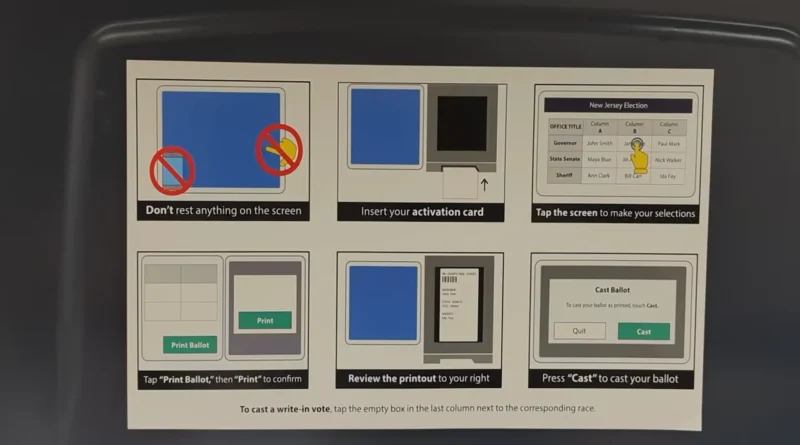Why Democrats Support Electronic Voting Machines
The Debate on Electronic Voting Machines: Why the Left Wants Them and the Concerns Surrounding Them
Table of Contents
Why Democrats Support Electronic Voting Machines. Electronic voting machines have become a hot topic in recent years, especially with the rising concerns about all the democrat election fraud in the news today. The debate is intense, with many democrats on the left supporting the use of these machines, while most Americans are worried about their potential drawbacks. Let’s explore why the left wants electronic voting machines, the pros and cons of these machines, and the role of foreign countries in electronic voter fraud.
Why the Left Supports Electronic Voting Machines
Efficiency and Accessibility
One of the common pros for electronic voting machines is their efficiency. These machines can speed up the voting process, making it easier for people to cast their ballots quickly. Long lines and waiting times can discourage people from voting, and electronic machines can help reduce these issues. Unfortunately, as with most things in life, nothing comes free. We have to give up security for convenience.
Another democrat claim is that electronic voting machines can be more accessible for people with disabilities. Many of these machines are designed to accommodate voters who might have difficulty using traditional paper ballots, such as those with visual impairments or physical disabilities. By making voting more accessible, electronic machines can help ensure that more people have the opportunity to participate in elections.
Many Americans as well as others around the world, see America’s problem as a serious one. They feel the democrat party is involved in a socialist takeover. In many ways the voting process is just one of many angles of attack on Americans’ freedoms. The democrat party has adopted the playbook of Nazi Germany from decades ago.
Accuracy and Prevention of Human Error
Another reason for the support is the belief that electronic voting machines can reduce human error. Traditional paper ballots can be miscounted or misinterpreted, especially when handwriting is unclear. Electronic machines can minimize these mistakes by providing a clear and consistent way to record votes.
The Pros of Electronic Voting Machines
Speed and Convenience
As mentioned earlier, electronic voting machines can make the voting process faster and more convenient. Votes are recorded and counted quickly, which can lead to faster results on election night. This speed is beneficial for both voters and election officials.
Accessibility
Electronic machines are often designed with features that help people with disabilities vote independently. This inclusivity ensures that everyone, regardless of physical ability, can participate in the democratic process.
Reduction of Human Error
Electronic voting machines can reduce the chances of mistakes that come with manually counting paper ballots. The consistent format and automated tallying process can lead to more accurate results.
The Cons of Electronic Voting Machines
While there are several advantages to electronic voting machines, there are also significant concerns that need to be addressed.
Security Risks
One of the biggest worries about electronic voting machines is their vulnerability to hacking and cyber-attacks. If someone can gain access to the machines or the software that runs them, they could potentially alter the results of an election. This possibility is a major concern, as it threatens the integrity of the democratic process. As was proven with the cases of electronic voter machines being tampered with and hacked in the 2020 and other elections.
Lack of a Paper Trail
Many electronic voting machines do not provide a paper receipt or record of the votes cast. Without a paper trail, it is challenging to verify the results or conduct a recount if there are suspicions of fraud or errors. This lack of transparency can undermine trust in the electoral process.
Technical Issues
Electronic voting machines can experience technical problems, just like any other electronic device. These issues can range from software glitches to hardware failures. If a machine malfunctions during an election, it can cause significant disruptions and potentially prevent people from voting.
High Costs
Implementing and maintaining electronic voting machines can be expensive. The initial cost of purchasing the machines, along with the ongoing expenses for software updates, maintenance, and training for election officials, can strain budgets. Some argue that these funds could be better spent on other election-related improvements.
Concerns About Foreign Influence
In addition to the domestic issues surrounding electronic voting machines, there are also concerns about foreign countries interfering in elections. In recent years, there have been reports of foreign hackers attempting to influence election outcomes by targeting electronic voting systems.
Cyber Attacks
Foreign countries with advanced cyber capabilities, such as Russia and China, have been accused of trying to hack into electronic voting systems. These cyber-attacks can involve gaining access to voter databases, altering voter information, or even changing vote totals. The goal of these attacks is often to create chaos and undermine confidence in the election results.
Disinformation Campaigns
Foreign countries can also use information campaigns to influence elections. By spreading information about how easy electronic voting machines are hacked or manipulated, they can sow doubt and confusion among voters. This strategy can lead to lower voter turnout and a lack of trust in the electoral process.
Balancing the Pros and Cons
Given the pros and cons of electronic voting machines, it’s important to find a balance that addresses the concerns while taking advantage of the benefits.
Improving Security
One way to address the security risks is to invest in stronger cybersecurity measures. This approach includes regularly updating software, conducting security audits, and training election officials on how to recognize and respond to potential threats. By enhancing security, we can reduce the risk of hacking and ensure the integrity of the voting process.
Implementing a Paper Trail
Another solution is to implement a paper trail for electronic voting machines. By providing voters with a paper receipt of their vote, it is possible to verify the results and conduct recounts if necessary. This step can increase transparency and build trust in the electoral system. Although this isn’t really a sure thing as the machines can be manipulated to cast a vote one way, but print out whatever the hacker wants it to on the print out.
Addressing Technical Issues
To minimize technical problems, it is crucial to have a robust maintenance and support system in place. Election officials should be trained to handle common issues, and there should be a plan for quickly addressing any problems that arise during voting. Regular testing and updates can also help ensure that the machines function correctly on election day.
Cost Considerations
While the cost of electronic voting machines can be high, it is essential to weigh these expenses against the benefits. Investing in a reliable and secure voting system can be seen as an investment in a fair election process. Governments can also explore funding options and partnerships to help cover the costs.
Penalties
The penalties for committing voter fraud should be severe. It is an act of treason and should be dealt with harshly. It’s such a serious crime in that it destroys the public’s confidence in the voting process and destroys the morale of the nation.
Why Democrats Support Electronic Voting Machines
Conclusion
Why Democrats Support Electronic Voting Machines. The debate over electronic voting machines is not a simple one, with valid arguments on both sides. The left claims to support these machines for their efficiency, accessibility, and potential to reduce human error. However, there are significant concerns about security risks, the lack of a paper trail, technical issues, and high costs. And too many citizens with good cause, don’t trust the democrat party to play fair. The democrat party’s attempts and successes at voter fraud to date gives good reason to be distrustful of their intentions.
Dealing with these issues calls for a comprehensive strategy that includes improving cybersecurity, implementing a paper trail, addressing technical problems, and carefully considering the costs. By finding a balance between the pros and cons, it is possible to create a voting system that is both efficient and secure.
Foreign influence in elections is a real threat that must be taken seriously. Strengthening the security of electronic voting machines and countering disinformation campaigns are critical steps in protecting the integrity of the voting process.
In the end, the goal is to ensure that every vote is counted accurately and that the election results truly reflect the will of the people. By carefully considering the benefits and drawbacks of electronic voting machines, we can work towards a more reliable and trustworthy electoral system. Why Democrats Support Electronic Voting Machines.




